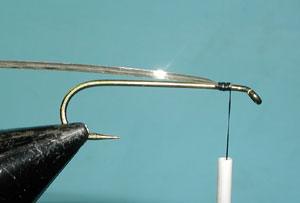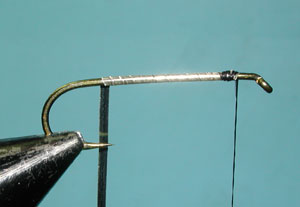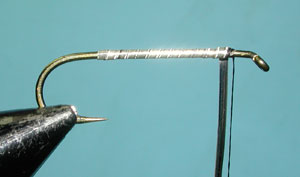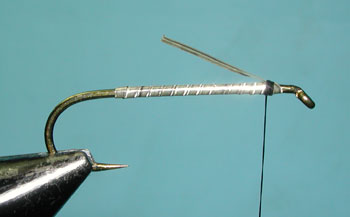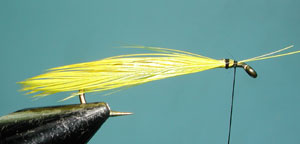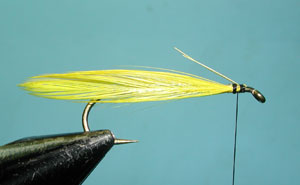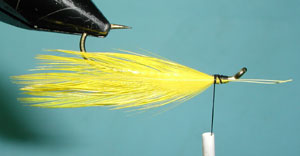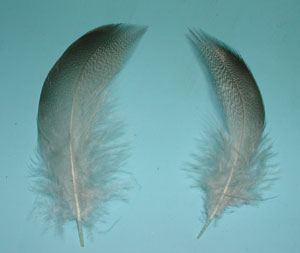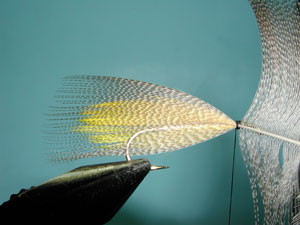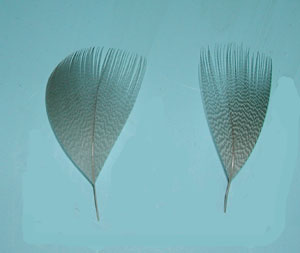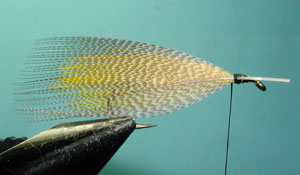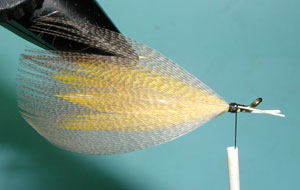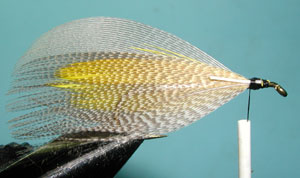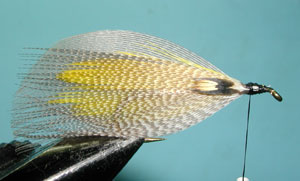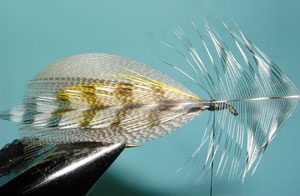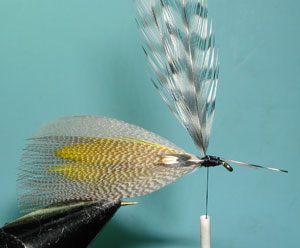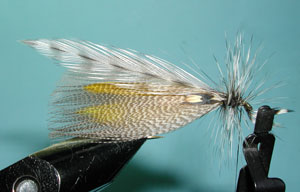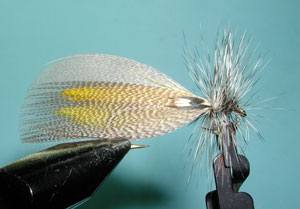Hornberg
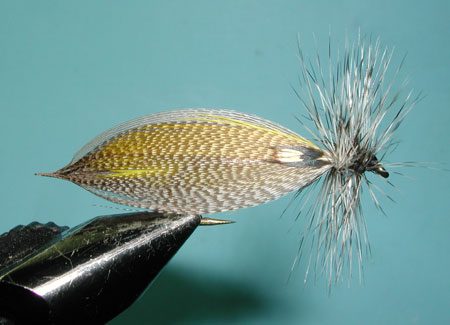
Hornberg
Tying Instructions
| Materials
to Order Material, click the link |
|
|---|---|
| Hook | TMC 5263 #8-14 |
| Thread | Danville Black 6/0 |
| Head | Danville Black 6/0 |
| Hackle | Grizzly hackle |
| Body | Silver tinsel (flat) |
| Inner Wing | Yellow saddle hackle |
| Outer Wing | Barred natural mallard flank feathers |
| Cheeks | Jungle cock or equivalent |
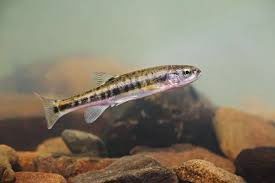
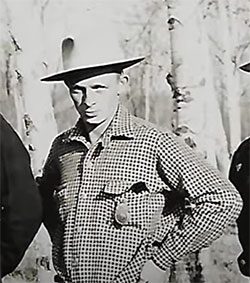
Frank Hornberg
Hornberg
As a streamer, Hornbergs represent baitfish. This unique fly was created by Frank Hornberg, a Game Warden from Central Wisconsin, in the 1920’s. Frank designed the pattern as a dry fly, named the Hornberg Special, to imitate caddis. At some point, Frank must have realized that the fly did well when sunk and retrieved as a streamer, which also lead it to being tied to larger hook sizes.
Multi-purpose Fly
In conjunction with the Weber Tackle Company in the 1940’s, Frank developed this fly to be “multi-purpose” in that it might be used as either a dry fly or a streamer depending upon the line used. In our Sierran waters most hornbergs, today, are used as a streamer.
Presentation
A common technique with this fly is to let the fly sit on top of the water for a few seconds, it will sink and you can retrieve with 2-3 foot strips. The depth will vary depending upon the type of line you are using. You can also do an upstream cast and let it drift down as a dry fly, once the fly reaches the end of it’s drift it can be retrieved as a streamer back upstream.
Lacquered Wing Point
Frank’s original design did not lacquer the mallard wing to a point and it was considered a dry fly. However, in current versions, we do lacquer the mallard wing into a point and these current versions are considered to be streamers. Within the Northeast, the Mallard wings remain like the original, unlacquered. Over time many areas of the country shortened the name from Hornberg Special to just Hornberg. The fly consists of a flat silver tinsel body enclosed by a pair of yellow hen hackles or yellow calf tail. The outer “Wing” is a pair of mallard breast feathers tied flat against the yellow underbody.
Cheeks
Jungle cock is normally applied as cheeks, although other materials will do. Try using a Guinea Hen Hackle, trimming the hackle so that only one eye shows or use a small black hen neck hackle and apply a nail finish color for the eyes. Two grizzly hen hackles are wrapped in opposite directions behind the black threaded head.
Hornbergs are popular on Crowley Lake, Silver Lake (June Lake Loop), and many of the Mammoth lakes. The pattern has been adapted to smaller hook sizes down to #14 for use on streams. It is a popular streamer pattern for Hot Creek. For color variations, try using different colors of bucktail for the inner wing and dyed Mallard Flanks for the outer wings.
Variations

Hornberg-Golden Olive
| Hook | TMC 5263 #8-14 |
| Thread | Danville Black 6/0 |
| Head | Danville Black 6/0 |
| Hackle | Grizzly and Brown Hackle |
| Body | Silver tinsel (flat) |
| Inner Wing | Yellow saddle hackle |
| Outer Wing | Gold Wood Duck dyed mallard flank feathers |
| Cheeks | Jungle cock or equivalent |
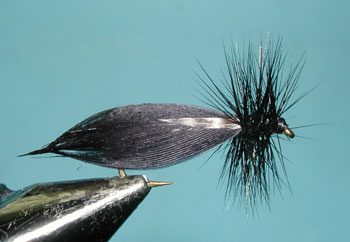
Hornberg-Black
| Hook | TMC 5263 #8-14 |
| Thread | Danville Black 6/0 |
| Head | Danville Black 6/0 |
| Hackle | Black hackle |
| Body | Silver tinsel (flat) |
| Inner Wing | Yellow saddle hackle |
| Outer Wing | Black dyed mallard flank feathers |
| Cheeks | Jungle cock or equivalent |
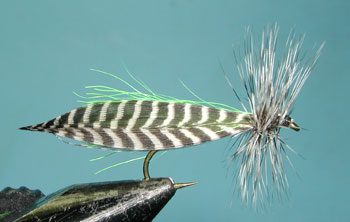
Hornberg-Green
| Hook | TMC 5263 #8-14 |
| Thread | Danville Black 6/0 |
| Head | Danville Black 6/0 |
| Hackle | Grizzly hackle |
| Body | Silver tinsel (flat) |
| Inner Wing | Chartreuse Dyed Bucktail |
| Outer Wing | Barred natural mallard flank feathers |
| Cheeks | Jungle cock or equivalent |

Hornberg-Red
| Hook | TMC 5263 #8-14 |
| Thread | Danville Black 6/0 |
| Head | Danville Black 6/0 |
| Hackle | Grizzly hackle |
| Body | Silver tinsel (flat) |
| Inner Wing | Red Bucktail |
| Outer Wing | Barred natural mallard flank feathers |
| Cheeks | Jungle cock or equivalent |


